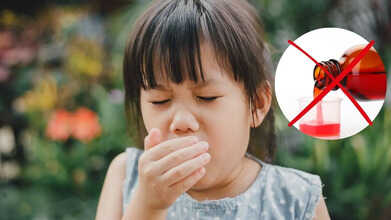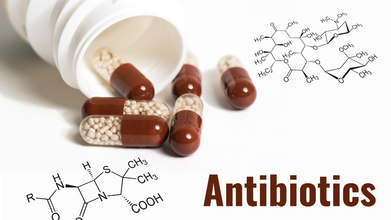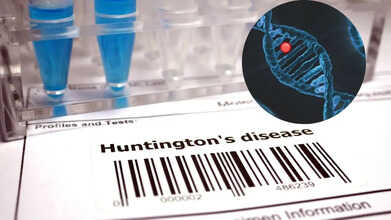- Health Conditions A-Z
- Health & Wellness
- Nutrition
- Fitness
- Health News
- Ayurveda
- Videos
- Medicine A-Z
- Parenting
- Web Stories
As India Bans More Cough Syrups, Here Are Safe Home Remedies For Kids

Credits: Canva
In light of growing concerns about harmful side effects linked to certain medicines, including the recent controversy over Coldrif syrup, authorities have now banned two more cough syrups after traces of diethylene glycol (DEG) were found. This chemical has already been linked to 22 deaths in the country.
While all fatalities so far have been connected to Coldrif, regulators in India, the world’s third-largest producer of medicines have advised people to avoid Respifresh TR and ReLife as well, since DEG contamination was detected in them during inspections. None of these products had been exported.
With cough syrups becoming a growing concern, we spoke with Dr. Umashankar Sharma, Medical In-charge (B.N.Y.S), Kailash Institute of Naturopathy, Ayurveda & Yoga, who shared safe alternatives and home remedies that parents can use to keep their children safe.
What Is The Coldrif Cough Syrup Row?
The Central Drugs Standard Control Organisation (CDSCO) has informed the World Health Organization (WHO) that three cough syrups, Coldrif, Respifresh TR, and ReLife have been recalled and their production has been stopped. According to reports by PTI, none of these medicines were exported from India.
The syrups were found to contain DEG, a chemical normally used in industrial processes, which can be extremely harmful if ingested, especially by children. The WHO highlighted the severity of the contamination: Coldrif was found to contain nearly 50% diethylene glycol, a toxic industrial antifreeze. The other two syrups contained the same chemical in smaller amounts.
Last week, the owner of Sresan Pharmaceutical was arrested, and local authorities have revoked the company’s manufacturing licence.
How Does Cough Syrup Become Deadly?
Some cough syrups are made using diethylene glycol (DEG) or ethylene glycol (EG). These chemicals are colourless, odourless, and sweet-tasting, which makes them seem harmless. They are also cheap, which tempts some manufacturers to use them instead of safer, more expensive sweeteners in children’s medicines.
However, DEG and EG are highly toxic, especially for kids. Even small amounts can cause severe problems, including breathing difficulties, kidney failure, long-term disability, or death. For this reason, their use in medicines is banned in many countries. In India, DEG is only allowed in medications at very low levels which is 0.1% or less.
Safe Alternatives For Cough Syrups In India
Coughs in children are often caused by viral infections, allergies, or environmental irritants such as dust or smoke. Many over-the-counter syrups are not recommended for young kids as they may have side effects and offer little relief.
Dr. Umashankar recommends several safe home remedies that can ease a child’s discomfort naturally. He says, “Warm liquids like soups, clear broths, or mild herbal teas, such as chamomile, help keep the throat moist and reduce irritation. Honey is a great natural option for children over one year; half to one teaspoon before bedtime can help calm night-time coughing.”
He also suggests using a cool-mist humidifier in the child’s room to add moisture to the air, which can loosen mucus and ease breathing. Saline nasal drops or a short steam session in a warm shower can also help relieve congestion.
Ensuring the child gets plenty of rest and stays hydrated with water or warm drinks is essential. Slightly elevating their head with an extra pillow at night can reduce coughing while they sleep..
These remedies are generally safe and effective. However, if the cough persists for more than two weeks, or if the child experiences high fever, wheezing, or difficulty breathing, it’s important to consult a doctor to rule out more serious conditions.
C-Section Births Can Lead To Sleep Problems And Severe Pain: Study

(Credit-Canva)
New research suggests that mothers who give birth by C-section (cesarean delivery) are more likely to have two major problems afterward: severe pain that disrupts sleep and daily activities, and a higher chance of developing sleep problems.
This study, presented at the ANESTHESIOLOGY 2025 annual meeting, highlights a crucial issue. People often forget how important sleep is when a mother is recovering. Sleep is key to a new mother's mental and physical health. The severe pain and lack of sleep linked to C-sections can cause big issues like postpartum depression, trouble thinking and remembering things, and extreme tiredness. All of this can make it harder for the mother to bond with her baby and have good relationships with family.
What Is A C-Section Birth?
According to Mayo Clinic, a C-section aka (cesarean delivery), is a surgery used to deliver a baby. It involves making surgical cuts (incisions) in the mother's belly and uterus to take the baby out.
A C-section may be planned ahead of time if the mother has certain complications during pregnancy, or if she has already had a C-section before. However, for a mother's first baby, the decision to do a C-section is usually made after labor has already started.
If you are pregnant, understanding the reasons for a C-section and what to expect during recovery can help you feel more prepared. Health professionals might recommend a C-section for several important reasons.
A C-section may be needed if labor stalls, the baby is under stress, or is in an unusual position (breech/transverse). Other reasons include carrying multiples, problems like placenta previa or cord prolapse, a physical blockage, the mother's serious health issues, or a past C-section.
How Is Health Affected After Childbirth?
The research included two main parts: talking to mothers (qualitative analysis) and analyzing a large database (quantitative analysis). For the first part, researchers interviewed 41 new mothers about their pain and sleep. They found a striking difference based on the delivery method:
Over two-thirds of mothers who had a C-section (both planned and unplanned) reported severe pain that made it hard to sleep and do daily tasks.
In comparison, only 8% of mothers who had a vaginal birth reported this level of severe, disruptive pain.
Can You Develop A Sleeping Disorder After C-Section?
For the second part of the study, researchers looked at a national insurance database containing information from more than 1.5 million mothers who gave birth between 2008 and 2021.
This analysis showed that mothers who had a C-section were 16% more likely to be diagnosed with a new sleep disorder (such as insomnia, sleep deprivation, or sleep apnea) between one month and one year after delivery, compared to those who delivered vaginally.
The lead author, Moe Takenoshita, M.B.B.Ch., from Stanford University, stressed the importance of managing pain well, especially for C-section recovery, since untreated pain worsens sleep. To help improve sleep, mothers can try several measures:
- Manage pain adequately with medication.
- Exercise regularly (as soon as it’s safe to do so).
- Sleep when the baby sleeps (napping during the day).
- Avoid caffeine or alcohol late in the day.
- Relax before bed with activities like taking a bath or practicing deep breathing.
Dr. Takenoshita noted that about one-third of all U.S. births are C-sections. She advised that anyone planning a C-section should understand the link to more severe pain and a higher risk of sleep problems. She urged all new mothers with sleep issues to discuss their concerns with their doctor for advice or a referral to a specialist.
WHO Warns Antibiotic Resistance Is Becoming A Widespread Issue: What Is Causing This Resistance To Common Medication

A major new report from the World Health Organization (WHO) has delivered bad news: one out of every six serious infections confirmed in labs worldwide last year could not be killed by the antibiotics meant to treat them.
Between 2018 and 2023, the problem of antibiotics failing (called resistance) got much worse. For many common types of germs, resistance went up by 5% to 15% every year. The growing inability of these essential medicines to work is a huge threat to people everywhere.
What is Antibiotic Resistance?
According to the National Foundation for Infectious Diseases, antibiotic resistance happens when bacteria learn to withstand the medicines(antibiotics) that are supposed to kill them. It's like the bacteria have developed a suit of armor against the drug.
When this happens, doctors have to switch to different antibiotics. These backup medicines might not work as well or might cause more side effects. Sometimes, a bacteria can become resistant to all available drugs, which leaves the patient with a dangerous infection that doctors have no way to treat. The alarmingly is that these tough, drug-resistant bacteria can spread from one person to another, both in hospitals and at home.
What Antibiotics Are People Becoming Resistant To?
The WHO's latest report is the most detailed look yet at this issue. It reports on how much resistance exists across 22 different antibiotics—the common drugs used to treat everyday illnesses. The report focused on eight common types of bacteria that cause things like:
- Urinary tract infections (UTIs)
- Stomach and intestinal infections
- Dangerous blood infections
- The sexually transmitted disease gonorrhoea
These germs include well-known ones like E. coli and the bacteria that cause staph infections.
Where Is Antibiotic Resistance A Big Problem?
The risk of antibiotics failing is not the same worldwide. It's highest in Southeast Asia and the Eastern Mediterranean, where one in three reported infections were resistant. In the African region, it was one in five. Resistance is also more common and getting worse in places that don't have good hospitals or labs to quickly find out what type of bacteria is causing an illness and what drug might work.
Dr. Tedros Adhanom Ghebreyesus, the head of the WHO, said that the rise of this resistance is "outpacing advances in modern medicine," putting families' health at risk. He urged everyone to use antibiotics carefully, and stressed the need for better tests, newer medicines, and stronger systems to prevent infections in the first place.
How Does Antibiotic Resistance Cause Us Problems?
The report warns that a type of bacteria known as Gram-negative bacteria is becoming the most dangerous threat globally. The countries least able to fight these infections are being hit the hardest.
- Two types, E. coli and K. pneumoniae, are the most common drug-resistant germs found in life-threatening blood infections. These infections can quickly lead to the body shutting down and death.
- Globally, the standard, first-choice antibiotic is failing against over 40% of E. coli and over 55% of K. pneumoniae.
- In Africa, resistance to this key antibiotic is now higher than 70%.
Even the last-resort, powerful antibiotics that doctors save for only the worst cases are starting to fail. These "last-resort" drugs are often very expensive and hard to find, especially in poorer countries, leaving doctors with no good options.
Can We Resolve This Issue?
On a positive note, more countries are starting to report data to the WHO's tracking system (called GLASS). The number has grown from 25 countries to 104 countries in the last seven years.
However, almost half of the world’s countries still didn't report data last year, and many that did still don't have good enough systems to track the problem accurately. Often, the countries that need help the most are the ones that can’t measure their own problem.
The WHO is urging all countries to work together to fight this by strengthening health systems and tracking resistance in people, animals, and the environment. The goal is for every country to report good-quality data on antibiotic resistance by 2030 so the world can clearly see the problem and decide how to fix it.
Is Huntington’s Disease Genetic? Here’s Everything You Should Know

Credits: Canva
Huntington’s disease (HD) is a condition that is hereditary and causes nerve cells in specific parts of the brain to slowly deteriorate and die. The disorder affects regions responsible for controlled and intentional movements, as well as those tied to mood, thinking, and personality. People with HD often develop jerky, dance-like body movements known as chorea, along with unusual postures and emotional or cognitive changes. For instance, they may experience sudden, uncontrollable motions in their hands, feet, face, or torso. These movements tend to worsen when the person feels anxious or distracted, and as the disease advances, they become more frequent and harder to manage.
Is Huntington’s Disease Genetic?
According to the National Institute of Neurological Disorders, Huntington’s disease is passed down genetically from parent to child. It follows an autosomal dominant inheritance pattern, meaning that only one copy of the faulty gene is enough to cause the illness. If a parent carries the gene, every child has a 50 percent chance of inheriting it. As it is known to be dominant, just one altered gene from either parent can trigger the disease.Also Read: Taking Amlodipine? NHS Issues Safety Warnings For Blood Pressure Patients, Here’s Why
The institute further explains that children who do not receive the mutated gene will never develop HD and cannot pass it on to their own children.
What Causes Huntington’s Disease?
Huntington’s disease stems from a mutation in the HTT gene. This defect creates an abnormal stretch in the DNA sequence, called an expanded CAG repeat. The mutation leads to the production of a faulty version of the huntingtin protein, which contains an excessively long polyglutamine chain.Over time, this unstable protein builds up in the brain and damages nerve cells. As the mutation is inherited in an autosomal dominant pattern, one copy of the defective gene is enough to cause the disorder.
Huntington’s Disease Can Now Be Treated With Gene Therapy
A new gene therapy treatment has shown promise in slowing the course of Huntington’s disease, marking what could be the first meaningful advance against this inherited brain disorder. In a recent clinical trial involving 29 patients in the early stages of HD, those who received a single, high-dose infusion of the therapy directly into the brain experienced a 75 percent slower progression over three years compared with the control group.The results, shared by the Amsterdam-based gene therapy company uniQure, were considered statistically significant across several clinical measures. Researchers also found lower levels of a harmful protein linked to brain cell damage in the spinal fluid of participants who received the treatment. Encouraged by these results, uniQure has announced plans to seek regulatory approval next year.
“This gene therapy represents a major step forward,” said Dr. Sandra Kostyk, a neurologist at Ohio State University Wexner Medical Center and one of the study’s investigators. “The data are encouraging.”
She added that while slowing the illness could mean more years of independence for patients, it is not a cure. Because of the small number of participants, more research and long-term follow-up are still needed.
Huntington’s Disease Symptoms You Need to Be Aware OfPeople with Huntington’s disease often lose control over their voluntary movements, which can affect daily functioning more severely than the involuntary jerks caused by chorea. Difficulties with voluntary movement can make it harder to work, communicate, and maintain independence.
According to the National Health Service, early signs may include trouble focusing or organizing tasks, forgetfulness, irritability, impulsive behavior, and changes in mood such as depression or anxiety. Other symptoms include small, uncontrollable jerks or twitches, clumsiness, and problems managing muscles.
Interestingly, symptoms can appear at any age but most often begin in a person’s 30s or 40s. When it develops before the age of 20, it is called juvenile Huntington’s disease. In such early-onset cases, symptoms may differ and the illness usually progresses more rapidly.
© 2024 Bennett, Coleman & Company Limited

